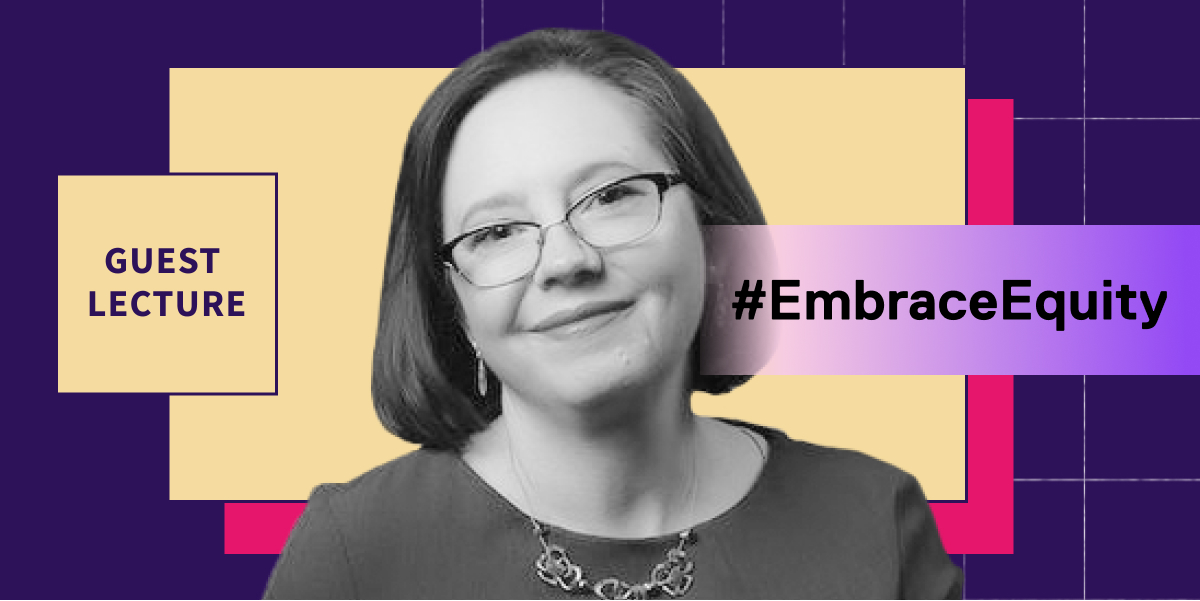Dr. Michelle Miller is a Professor of Psychological Sciences at Northern Arizona University. She is the author of Minds Online: Teaching Effectively with Technology and has written about evidence-based pedagogy in scholarly as well as general-interest publications including The Chronicle of Higher Education, Change: The Magazine of Higher Learning, and The Conversation. She works with faculty and organizations to create more effective and engaging approaches to learning. You can find Dr. Miller at her website, as well as on Twitter, Academia.edu, and Speakerhub.
An award-winning educator and expert in the field of cognitive science, Michelle Miller has devoted a good chunk of her career to helping instructors incorporate technology into their teaching. Her book Minds Online is considered required reading and her ideas are now being put to the test as thousands of faculty plunge headlong into the world of online instruction.
At a time of unprecedented change, Miller advocates for the need for flexible design and understanding student goals in order to hone in on what’s truly important. Identifying priorities and making tradeoffs is critical—not only to keep students engaged and motivated but for the good of instructors teaching in an entirely new way.
There’s still a lot of uncertainty around the fall 2020 semester. Given that the pandemic is far from over, what are some of the risks you see in how faculty have approached their course preparations?
It’s not so much that faculty have left bases uncovered. I think we need the flexibility to change approaches—going from a synchronous to asynchronous approach online or going from hybrid in-person instruction to an entirely synchronous approach. And we do need to have some contingencies in place. What happens if I lose access to the internet? What if some of our students need to quarantine? These are the kinds of things that need to be addressed.
You’re a proponent of flexible course design. How do you define that?
Flexible teaching offers different methods of engagement for different students, providing pathways around barriers that could potentially exclude some students—really at any time, but especially now. Things like lack of access to the kind of equipment and bandwidth that’s needed to do remote instruction.
I’m taking lessons from my own experience of finding alternatives for students—like maintaining group cohesion when students are engaging in different ways, or managing my own limited cognitive resources when I’m engaging with different groups simultaneously.
Do you use certain templates or tools to map out your courses, or even to identify where things could go off the rails?
For this upcoming semester I used a simple week-by-week structure, which is familiar to students. Everything I need to do in a week is right there in a folder on the learning management system, which helps me stay organized.
I heavily emphasize small-stakes, frequent-engagement assignments—not the one big killer assignment that shows up in the very last week of the semester. Students have larger capstone assignments and projects, but we work up to that. And all of those intermediary steps are right there in the folder: the course content, links to the courseware and other small-stakes assignments.
I try to use as much of a repeating or recursive structure as possible. For the most part, those small-stakes assignments recur every single week. I like to set some consistent due dates as well, so we have that rhythm to fall back on. It may not be fancy, but that’s helping us stay on top of everything. This structure also includes alternatives, so if a student can’t make one of my remote synchronous meetings, similar concepts can be explored in an asynchronous discussion forum.
Did you do anything differently in setting up the semester with an eye to flexibility?
It really does demand a different approach to communication. For the first time ever, I’ve incorporated an outside application that allows me to message students in a class and allows them to message each other without sharing phone numbers. Traditionally, this was done through e-mail and office hours, but I feel we have to expand on that model.
I also ditched traditional office hours in favor of an online scheduler system to meet students’ needs in a more immediate way. It could be Zoom. It could be FaceTime. It could be a phone call. It doesn’t matter. But they have those options. This requires some marketing with students—they’re not used to what I’m calling ‘radical availability.’ But it is helping.
Remote synchronous instruction can be engaging, but you do have to adjust your expectations around time. There’s more lag time, there might be technical issues. Sometimes it makes sense in large classes to batch questions and address them at once. In smaller classes, I’d rather get a text from a student that I can handle in 30 seconds, in real time, when they need it.
I ditched traditional office hours in favor of an online scheduler system to meet students’ needs in a more immediate way.
Why is it important to incorporate student goals into course design?
When I talk about student goals, I’m referring to why they’re in this course, what gets them out of bed in the morning as a student. This is the time to toggle off the cynicism switch—goals aren’t just about an easy A. Students have some noble goals, and those are important to keep as our beacon when providing instruction.
From a cognitive science perspective, we retain knowledge better when it maps onto immediate goals. That’s the way your mind and brain are set up to take in information. So when students understand what they’re trying to accomplish in class and how it fits into their goals, they can soak up information like a sponge.
There are more formal and less formal approaches. Let’s say you want to get familiar with polling software. Instead of some incredibly high-stakes exam, why not try that on the first day of class and simultaneously tie that to learning about student goals?
How does this understanding help you enable flexibility?
It ties into priorities and trade-offs. It forces us to step back and understand we can’t do everything, and it allows us to hone in on the most critical and essential stuff. For example, I zeroed in on the active learning components built into all of my classes, and that’s what I want to translate into discussions that students are doing as a substitute.
You encourage students to think of their course like a sandwich. How does that help decide which aspects should be taught synchronously as opposed to asynchronously?
I don’t want to take credit for the concept, but the basic idea is that the asynchronous components of your course—the assignments, the offline discussion and so forth—are the meat and cheese. And think of the synchronous components as the condiments, the pickle or the special sauce. Now, why is this useful? I believe it helps discourage using our synchronous time primarily for content delivery.
When students are working in small groups, for example, being able to ask questions and get a live response or watch a short video clip requires synchronous class time. These days I think we do need to take a more creative approach, so that’s the purpose of the sandwich analogy.
How do faculty ensure they have the right tools in place for flexible course design?
Right now our interactions are going to be mediated in some way by technology. But we shouldn’t start with the tools. We need to be designing for the goal. Is my goal to get students talking to each other? Is it to develop a particular thinking skill? Is it to build a knowledge base? So here again, it comes back to goals. When we’re clear on the objective, it makes it easier to identify the right technology.
When we’re clear on the objective, it makes it easier to identify the right technology.
The shift to emergency remote teaching in the spring didn’t land well with a lot of students. How can instructors use technology to increase students’ attention online?
There’s a lot of discussion about cameras being on or off. My policy is that having your camera on is appreciated but not required. The more inclusive thing to say is, “However you can join us is how you can join us.” Accept that some of your students may not have all eyes on you at all times in all of your synchronous meetings, and that’s okay.
That said, we want to create conditions for students to be attentive and engaged—having breakout groups, small group discussions, asking the types of questions that always get students to raise their hands in a face-to-face environment. Cherry-pick the best of those and front-load them.
I’ve used a whiteboard tool at the start of class and told students they could doodle on it while we were waiting for folks to join. It was a lighthearted way to road-test the tools and let students know this class is going to ask you to jump in. But we also have to let ourselves off the hook if students are not 100 percent there all the time.
Given your work in cognitive science, do you have any practices you recommend instructors use in the virtual classroom to deepen understanding or subject mastery?
No discussion of learning sciences and technology is complete without talking about retrieval practice. This is when we’re pulling things out of memory, like when we take a quiz for understanding—not the high-stakes assessment at the end of a course. If you’ve just taken a quiz, so much more of that information is going to stick and soak in. This is where technology shines, of course.
Do you have any tips for humanizing the online learning experience?
I would encourage people not to think of community building as the thing you do in the first 20 minutes of class. To me, community is something that happens organically from good course design and best practices. It’s something that should be happening every few minutes of every class. Active learning activities should be done in a way that connect students to each other and to the instructor. It’s not that we all have to go out and sing karaoke together; working on a project is an authentic way to connect.
It’s going to be a challenging semester. But as we adapt to new learning formats, what would you encourage faculty to keep top of mind?
It’s a time for flexibility on a lot of levels. Not that standards go out the window, but if there was ever a time to question our basic assumptions, this is the time to do it. You need depth over breadth, quality over quantity. This semester I’m trying to do things differently, where students have different options to demonstrate their knowledge. Because that, to me, is what testing is about.


